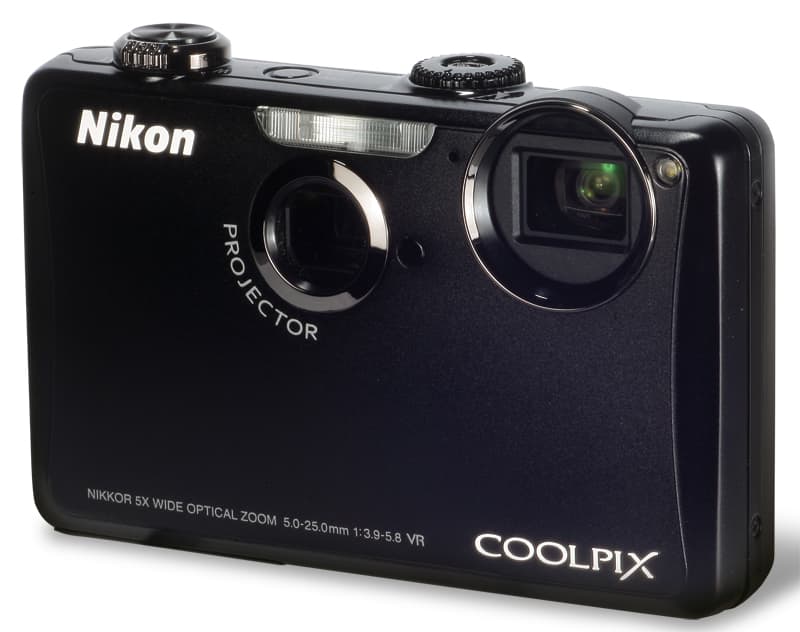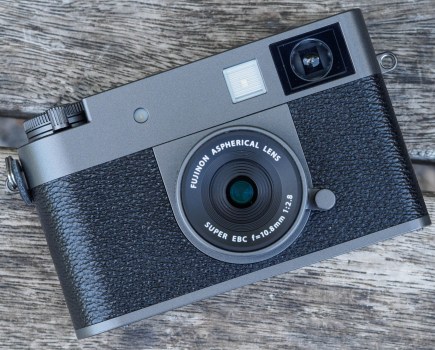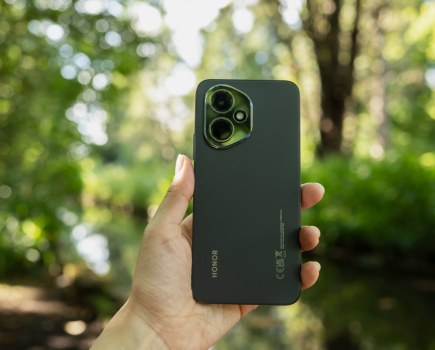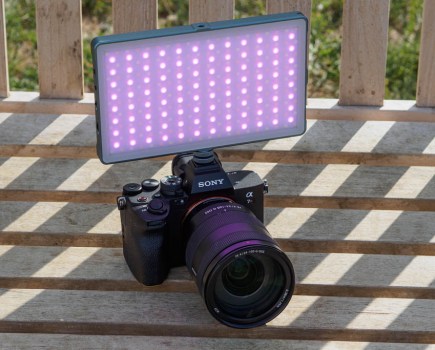Introduction
Nikon wowed us when it introduced the Coolpix S1000pj, which was the first camera to include a built-in projector. A year on, with other manufacturers apparently uninterested in offering such a feature, its successor, the Coolpix S1100pj, remains one of a kind.
During this time there have been clear and further steps towards image sharing through Wi-Fi and social networking, which suggests that this is the way we will display images direct from a camera in the future. However, the fact that Nikon has persisted with its pj compact camera series implies that the company considers projection to be a viable alternative for image sharing.
We found that packing two technologies into such a small device as the original S1000pj had its inevitable downsides, but Nikon has evidently taken stock of feedback about this model and made changes across the board in functionality and projector, video and image quality. Also, with an initial RRP lower than that of its predecessor (despite the rise in VAT), it seems the S1100pj is a reasonable and viable camera and projector option.
The Camera

The Coolpix S1100pj has a similar feel to the earlier S1000pj, with only minor changes to the design, size and weight. It remains in essence a point-and-shoot camera, offering only auto controls for exposure, although ±2EV exposure compensation, white balance and ISO can be manually selected.
With a new 14.1MP sensor, the S1100pj offers an extra two million pixels over its predecessor but, while it packs more photosites onto the same size sensor, image quality has not been compromised.
However, it has not been improved, either, and at best remains satisfactory. Images are very noisy at ISO 1600 and above, so the camera is best used in daylight at lower sensitivities. In brighter daylight, images show pleasing tone.
Crisper videos are possible with the improved 720p HD video introduced into the S1100pj and, handily, the zoom function can be used while filming. There is also a built-in video light for low-light shooting.
Not only is the screen larger in this model at 3in, and boasts a higher 460,000-dot resolution, but it is also a touchscreen. Through this, Nikon has been able to make the camera’s operation much more intuitive in playback and shooting mode. The company has also introduced some new digital effects, including a basic paint tool for handwriting messages on images, and when combined with the projector they provide many fun and creative possibilities.
The Projector
 Image: The projector can now be used with a computer, which is useful for slideshows and presentations
Image: The projector can now be used with a computer, which is useful for slideshows and presentations
It is the projector that is the S1100pj’s main point of interest. I really enjoyed taking an image and instantly projecting it large on a wall to view with friends and family, who also found it great fun.
At 14 lumens, the S1100pj’s projector is 40% brighter than that of its predecessor. An increase in brightness and resolution for moving and still images means the maximum projection size is up to 47in across the diagonal – not a vast change, but a welcome improvement.
However, the larger the image is displayed, the darker and less vibrant it becomes, so the space in which you can effectively use the projector remains limited, as before, to a darkened front room or office space. Manual focus is controlled by a new wheel on the top of the body, but the tilt function on the base is fiddly.
Whereas the S1000pj is limited to projecting images, the S1100pj can project computer files via a wired connection. This makes it a more versatile device as it can also be used for presentations. Images can be viewed by finger touch on the screen or by the included remote control, which is handy for slideshows and presentations.
It is a little disappointing, however, that the battery life remains the same, at one hour when using the projector.
Our verdict
Nikon has made improvements in key areas on the Coolpix S1100pj, although not significantly enough for my liking in image quality and light output.
The touchscreen function makes for much more intuitive operation, and I hope Nikon persists because the potential is there for an extremely useful device.
A slightly larger body would be an acceptable compromise to provide a greater light output and image quality.








